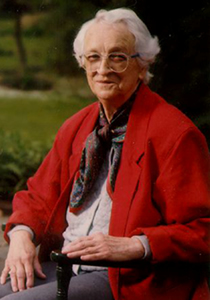Nola Pender

- Professor Emeritus, University of Michigan, School of Nursing
- PhD, Northwestern University, Evanston, IL
- BS, Michigan State University, East Lansing, MI
- Identifies behavioral perspectives that relate to whether people will engage in health promoting behavior.
- Goal: person engages in positive health outcomes.
- Focus: optimal health of the patient
Three Important Factors
(relating to person engaging in health promoting behavior)
- Individual characteristics
- Behavior-specific cognitions and affect
- Behavioral outcome
Three Important Factors
(relating to person engaging in health promoting behavior)
- Individual characteristics
- Prior related behaviors and personal factors provide baseline experiences
- Personal factors: biological, psychological, sociocultural
Three Important Factors
(relating to person engaging in health promoting behavior)
- Individual characteristics
- Example (biological): Given two people have trained in the same manner over the years and they are healthy, it is usually easier for a 25 year old man to run a marathon than a 58 year old man.
Three Important Factors
(relating to person engaging in health promoting behavior)
- Behavior-specific cognitions and affect
- Perceived benefits and barriers to action
- Perceived self-efficacy
- Activity-related affect
- Interpersonal influences
- Situational influences
Three Important Factors
(relating to person engaging in health promoting behavior)
- Behavior-specific cognitions and affect
- Perceived benefits to action
- Extrinsic and intrinsic rewards
- Example: If I do a 5 minute meditation, I think I will be calmer and more alert.
Three Important Factors
(relating to person engaging in health promoting behavior)
- Behavior-specific cognitions and affect
- Perceived benefits to action
- Example: Supermarkets with fruit are not in my neighborhood, and fruit is too costly.
Three Important Factors
(relating to person engaging in health promoting behavior)
- Behavioral outcome
- Example: An 89 year old man with diabetes may feel it is too late to change his eating patterns.
Understand Phenomena
Nurse can look at factors that impact a patient’s involvement in healthy behavior.
Usefulness
Applicable to nursing practice, evidence-based practice and research.
Article (citation below) describes research using the HPM.
Outcome
Health promotion is part of nursing practice. ANA definition of a professional nurse includes the “promotion of health.”
Family and Community Health, 25
Grubbs, L., & Carter, J. (2002). The relationship of perceived benefits and barriers to reported exercise behaviors in college undergraduates. Family & Community Health, 25(2), 76-84.
Bandura’s Social Cognitive theory
Click on the factors that influence Mariel to engage in health-promoting behavior.
Mariel
Mariel a 14 year freshman in high school. Her parents were born in Puerto Rico. She tried out for soccer team but did not make the team. She is upset and feels like a “total failure”. The coach said she has is a “potential talent” and should try out when she gets into a regular practice regimen.Her parents feel bad for her, but do not think sports are that important for a girl. However, they said that they will attend her games if she gets on the team. Daniel, her 16 year old brother said that he would help and go with her to the nearby soccer field after school.
Prior related behavior: negative impact
Personal cognitions and affect: negative
Interpersonal influence – coach: positive, support
Situational influence – family: negative
Situational influence – family: positive
Situational influence – family: positive
Field near home
Hildegard Peplau

- September 1, 1909 – March 17, 1999
- Professor Emeritus, Rutgers University, College of Nursing
- 1954-1974: Faculty, Rutgers University
- Founded MS in Psychiatric Nursing Program at Rutgers University
- MA and EdD, Teachers College, Columbia University, NYC
- Nursing theory for interpersonal care of patients
- Nurse-patient relationship fundamental to providing optimum nursing care: empathy important component
- Stages of the nurse-patient relationship
- Attending to the mental health needs and problems of patients
- Emotional functioning
Patient participates in the nurse-patient relationship focused on higher level functioning. Patient and nurse focus on patient’s problems through interpersonal relationships. What the patient learns through the therapeutic relationship the patient can take outside the relationship to focus on working on healthier interpersonal relationships.
Stages of Nurse-Patient Relationship
- Orientation
- Identification
- Exploitation (Working Stage)
- Resolution
| “I see it is difficult for you to express your feelings.” | |
| “You tried to talk with your sister more openly about your feelings.” | |
| “You made a plan regarding how you are going to deal with the family reunion.” | |
| “I see that you are ready to do things on your own.” |
Correct
Teacher
Leader
Surrogate
Resource
Stranger
Person
Nurse and client
Nursing
Interpersonal therapeutic process
Health
Movement of personality toward creative, constructive living
Environment
Therapeutic relationship
Patient with Anxiety
- Developed operational definition of anxiety
- Mild, moderate, severe, and panic
